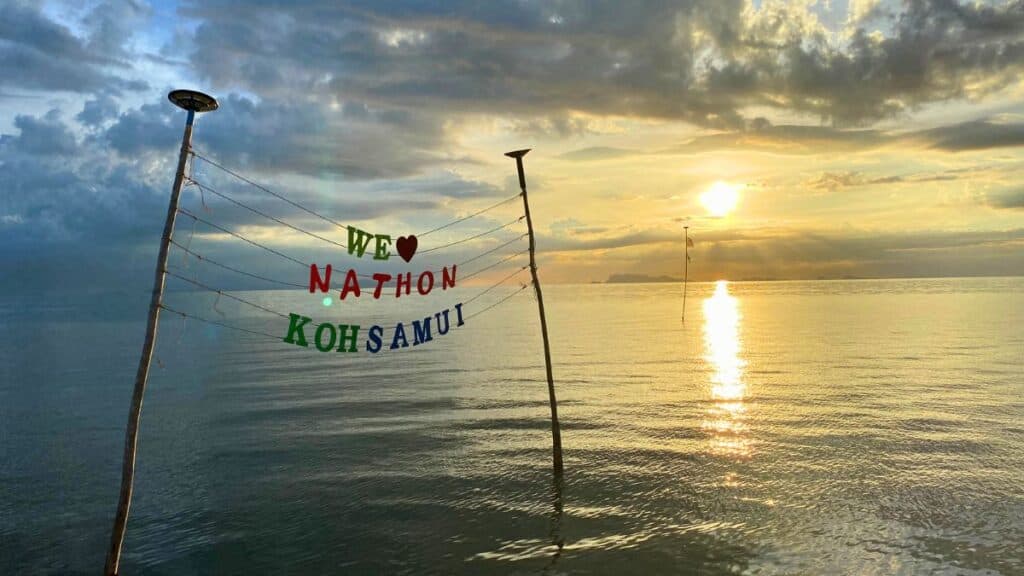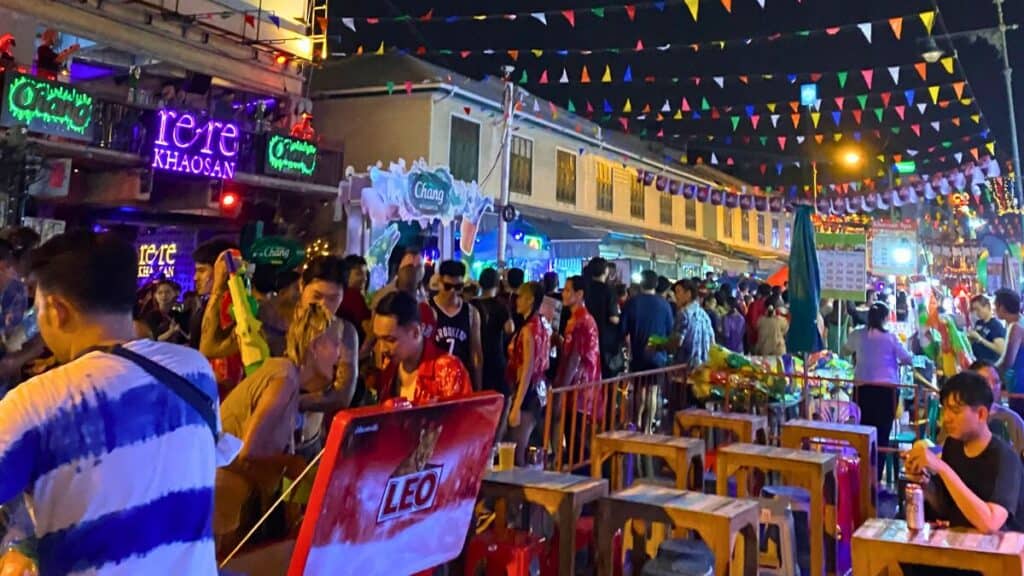Are you dreaming of pristine beaches, lush jungles, rich cultural experiences, and tantalizing cuisine in the “Land of Smiles”? Here is the best time to visit Thailand to maximize your time in the country.
Any time is perfect for exploring Thailand, whether you’re drawn to its tropical island getaways or vibrant cultural hubs. However, the ideal time for your visit depends largely on Thailand’s seasons and weather patterns. From spectacular local events to unique festivals, understanding Thai holidays and their timing can enhance your travel experience.
Thailand maintains warm temperatures and high humidity levels year-round as a tropical nation, with climate variations influenced by monsoon rains. Despite the hot and humid conditions, Thailand’s agricultural sector thrives, particularly in rice cultivation, while tourism flourishes thanks to its stunning beaches, cultural festivals, and outdoor adventures.
But is there truly a “best time” to visit Thailand?
When Is the Best Time To Visit Thailand
The best time to visit Thailand is from November to February for pleasant weather, ideal for outdoor activities and exploring stunning landscapes. December is the best month for comfortable weather, including in Bangkok. For budget-friendly travel, consider May, when prices are lower due to the end of peak tourist season, marking the start of the rainy season from May to October with lush landscapes.
Bangkok is best from November to February for cool, dry weather, perfect for exploring markets and temples of Thailand and indulging in street food. Regarding the best beaches in Thailand, Phuket shines from November to April with sunny weather for beach activities and lively nightlife, while Krabi is ideal from November to March for serene beaches and water sports.
Visiting Thailand in Winter: November to February
Winter in Thailand brings cooler, dry weather, with daytime temperatures between 79 to 86 degrees Fahrenheit (26-30°Celsius), dipping to 20°C (68°F) at night, particularly in Northern regions. The winter season is favored for outdoor activities.
Activities
Enjoy winter in Thailand with activities such as:
- Exploring Bangkok’s markets and temples.
- Trekking in Chiang Mai.
- Visiting the city ruins of Ayutthaya.
- Watching sunsets on Phuket, Krabi, and Koh Samui beaches.
- Scuba diving in Koh Tao.
Events and Festivals
Several festivals mark winter in Thailand:
- Loy Krathong: A festival to honor the water goddess – full moon night of the twelfth month of the Thai lunar calendar
- King’s Birthday Celebrations – December 5
- New Year festivities – January 1
Thailand’s winter, with its pleasant climate and multitude of events, promises a rich and enjoyable travel experience.
What to Pack
Pack light, breathable clothing like linen or cotton, avoiding heavy fabrics. Bring rain gear and opt for moisture-wicking fabrics. Don’t forget sun protection and comfortable footwear. Consider buying local clothes in Thailand to save space.
Visiting Thailand in Spring: March to May
Spring in Thailand brings rising temperatures 86°F to 104°F (30°C to 40°C) during the day, dropping to 77°F (25°C) at night, and sporadic rain showers as the country gears up for the rainy season. The high humidity makes it feel hotter than it is.
Activities
Despite the heat, spring opens up opportunities to enjoy:
- Idyllic beaches at Koh Samui, Koh Lanta, or Hua Hin.

- Khao Yai National Park or Erawan National Park’s refreshing waterfalls.
- Chiang Mai’s serene countryside and vibrant markets.
- Thai cooking classes to discover local cuisine.
- Khao Sok or Doi Inthanon National Parks for wildlife and nature experiences.
Events and Festivals
- National Elephant Day (March 13): Offers activities including feeding and bathing elephants.
- Songkran Festival (April 13-15): Celebrates Songkran Festival, Thai New Year, with nationwide water fights, traditional rituals, and parades.

- Visakha Bucha (date varies in May): A Buddhist holiday marking the birth, enlightenment, and death of Buddha with ceremonies at temples countrywide.
Visiting Thailand in spring allows you to relish its beautiful landscapes and colorful festivals before the onset of the rainy season. Prepare for the heat and enjoy an unforgettable experience.
What to Pack
Pack lightweight, breathable clothing, including shorts, T-shirts, and dresses to suit the high temperatures. Wear sun-protective long-sleeve shirts, and opt for comfortable shoes or sandals. Clothing covering your shoulders and knees is necessary for temple visits. Remember to bring a light raincoat or umbrella due to the occasional showers.
Visiting Thailand in Summer: June to August
Summer in Thailand features hot and humid weather, with sporadic rain showers providing relief. Daytime temperatures range around 105°F (40°C).
Activities
- Visiting eastern coast beaches, like Koh Chang, Koh Samet, and Rayong.
- Exploring Bangkok’s malls, markets, galleries, and museums.
- Witnessing wildlife at Khao Yai National Park.

- Boating around the islands near Krabi, Phuket, and Koh Phi Phi.
- Experiencing Thai massage classes or relaxing at wellness spas.
Events and Festivals
- Phi Ta Khon Festival (June or July, dates vary): Colorful street parades with hand-painted masks and traditional dances in Dan Sai village.
- Asana Bucha (July, full moon of the eighth lunar month): Celebrates Buddha’s first sermon with temple visits nationwide.
- Her Majesty the Queen’s Birthday (August 12): National holiday with decorations and events in Thailand.
Visiting Thailand in summer allows you to enjoy the vibrant atmosphere, stunning landscapes, and lively festivals, creating an unforgettable experience despite the humidity and rainfall.
What To Pack
Pack light, breathable clothing such as shorts, T-shirts, sundresses, sun-protective long-sleeve shirts, and wide-brimmed hats for comfort. Choose sturdy shoes or sandals for mobility, and bring a lightweight rain jacket or umbrella for rain showers. Temple-appropriate attire (covering shoulders and knees) is necessary.
Visiting Thailand in Fall: September to October
Fall in Thailand, from September to October, signifies the transition from monsoon-summer to the cooler winter. With humidity receding and temperatures lowering, it offers a pleasant outdoor experience.
Activities
- Discover Bangkok’s street food, bustling markets, and heritage-rich temples.
- Visit the history-rich UNESCO World Heritage site, Ayutthaya.
- Take a cruise down the Chao Phraya River and enjoy Bangkok’s views.
- Explore Chiang Mai’s or Pai’s cooler regions, perfect for hiking enthusiasts.
- Canoe through Bangkok’s floating markets for an exclusive shopping experience.
Events and Festivals
- Vegetarian Festival (Late September – Early October): A 10-day fest with locals following a vegan or vegetarian diet, accompanied by street parades and mystical rituals.
- Wan Awk Phansa (October, date varies): Concludes the Buddhist Lent with a display of candle-lit boats parading the waterways.
- Chonburi Buffalo Races (October, date varies): Annual event near Bangkok celebrating buffalos’ role in Thai agricultural life, featuring buffalo races and pageants.

Fall in Thailand offers a pleasant climate, less crowded destinations, and lively cultural experiences and is ideal for enriching your travel diary.
What To Pack
It’s best to pack light and breathable fabrications—shorts, T-shirts, and sundresses for the daytime. A lightweight jacket and a packable umbrella might be useful for seasonal rain and cool nights. If visiting temples, remember to bring clothing that covers your shoulders and knees. Comfortable shoes or sandals are key for exploration.
When to Book Accommodations
To obtain affordable accommodations in Thailand, booking your stay through online platforms like Booking.com or Expedia is advisable. These websites offer various options, including discounted rates for hotels and guesthouses, which can help you find the best deals and save on travel costs.
To ensure the best prices and availability, make your reservations a few months in advance, especially if you plan to visit during the high tourist season from November to February.
For more accommodation options, you may click on the map.
Tips To Stay Safe During Your Thailand Trip
Thailand is undoubtedly one of the most renowned travel destinations worldwide, luring visitors with its vibrant landscapes, rich culture, and friendly locals. However, to make the most of your Thai adventure, here are some crucial insights divided into practical advice, safety concerns, and special notes targeted at women and solo travelers.
1. Show Respect
The Thai people take great pride in their monarchy and Buddhism, their predominant religion.
Never disrespect the monarchy or Buddhist symbols, including Buddha statues and temples. ‘Wai,’ the traditional Thai greeting involving a slight bow with palms pressed together in a prayer-like fashion, is warmly appreciated by the locals.
2. Conservative Dressing
Dressing modestly in religious sites and temples is mandatory. Accommodate in your travel wardrobe clothing that covers your shoulders and knees. Also, Thai culture requires removing your shoes before entering a temple or a local’s home. This respectful practice extends even to some shops and accommodations.
3. Stay Hydrated and Protected
Thailand’s tropical climate often records high temperatures. Ensure to drink plenty of water to keep hydrated. Applying a high-SPF sunscreen and wearing a hat or sunglasses is a good way to protect your skin against strong UV rays.
4. Delve into Culinary Enjoyment
Thai street food is rich in flavors and is a must to taste. However, opt for popular stalls teeming with locals to ensure fresh food. Trying to familiarize yourself with staple Thai dishes will enable you to order with ease and relish the authentic Thai taste.
5. Adopt Public Transportation
Navigating bustling areas like Bangkok is generally quicker with the Skytrain or subway due to infamous traffic jams. While tuk-tuks and taxis are exciting modes of transport, remember to negotiate and decide on a fare before embarking on the journey or ask the taxi driver to use the meter.
7. Beware of Common Scams
As with popular tourist destinations, common scams can involve overpriced taxi fares or shady tour operators. Stay cautious, and always research before any significant purchases or tour bookings.
8. Ensure Travel Insurance
It’s wise to secure comprehensive travel insurance covering everything from potential travel disruptions and medical emergencies to activities like extreme water sports or other unexpected incidents.
Consider protecting yourself with travel insurance such as SafetyWing, which can cover medical emergencies, trip cancellations, and other unforeseen incidents during your stay. Use the widget below to snag the perfect policy for your needs and travel with peace of mind knowing you’ve got your back covered, no matter what adventures come your way!
Special Advice for Women and Solo Travelers
Women and solo wanderers should pay extra attention to safety. Avoid secluded areas, especially after dusk, and stick to populated, well-lit locations. Keep your family or friends updated about your travel itinerary as an extra safety measure.
Be ready with copies of your passport and critical documents, and keep them separate from the originals to avoid any trouble if the originals are misplaced.
Frequently Asked Questions – Best Time To Visit Thailand
What Is the Best Month To Go to Thailand?
The best month to visit Thailand is considered to be December. During this time, the weather in most parts of the country, including Bangkok’s capital, is usually comfortably cool and dry.
What Is the Cheapest Time To Go to Thailand?
The cheapest time to travel to Thailand would be May, at the onset of the rainy season. The lower prices are due to the end of the peak tourist season.
What Is the Best Weather To Visit Thailand?
Ideal weather for visiting most of Thailand, excluding high-humidity regions like Bangkok, is during the dry season, which runs from November through March.
When Is the Rainy Season in Thailand?
The rainy season in Thailand typically begins in May and ends in October.
Conclusion – Best Time to Visit Thailand
Thailand offers travelers a diverse range of attractions and experiences, but choosing the right time to visit can significantly impact your journey.
Did you find the information in this article helpful? Hopefully, you could use what you learned from reading this to make a grand Thai vacation plan that will always be in your fondest memories. Chok dee!
Your Ultimate Travel Guide & Booking Resources
Skyscanner is my trusted ally for booking flights, guiding me to the perfect travel options while making the journey planning process a breeze with its user-friendly interface and extensive search capabilities.
12Go Asia is my ultimate travel companion in Asia, offering the best budget service platform for seamless booking of trains, buses, ferries, and flights, ensuring every adventure unfolds smoothly and effortlessly.
Booking.com is my ultimate lodging partner. It offers many accommodations worldwide and simplifies my travel experiences with its user-friendly platform and unbeatable deals.
Get Your Guide is my go-to for personalized travel experiences, enriching my journeys with unique tours and activities curated to my interests, making every adventure unforgettable and tailored to my preferences.
SafetyWing is my peace of mind on the go, offering comprehensive travel medical insurance with affordable plans and hassle-free claims, ensuring I can explore the world worry-free, knowing I’m protected wherever I roam.
LifeStraw Go Bottle is my trusted hydration companion for outdoor adventures, filtering water on-the-go to keep me safe and hydrated, ensuring every hike or travel experience is worry-free and enjoyable.
Related Reads:
- Scuba Diving in Thailand – 16 Best Scuba Diving Destinations
- Fun Facts About Thailand: Fascinating Highlights You Should Know
Founder of Spark Nomad, Radical FIRE, Copywriter
Expertise: Personal finance and travel content. I’m a full-time traveler, and I’ve been to 49 countries and 5 continents.
Education: Bachelor of Economics at Radboud University, Master in Finance at Radboud University, Minor in Economics at Chapman University.
Over 200 articles, essays, and short stories published across the web.
Marjolein Dilven is a journalist and founder of Spark Nomad, a travel platform, and Radical FIRE, a personal finance platform. Marjolein has a finance and economics background with a master’s in Finance. She has quit her job to travel the world, documenting her travels on Spark Nomad to help people plan their travels. Marjolein Dilven has written for publications like MSN, Associated Press, CNBC, Town News syndicate, and more.

